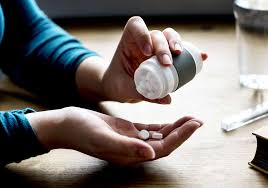Paracetamol or acetaminophen is a drug that is widely used as a fever (antipyretic) and pain reliever (analgesic). Paracetamol, as an analgesic, can be used as a primary headache therapy, namely migraine. The use of Paracetamol is quite widespread in the community because it has several advantages, namely a comprehensive therapeutic index, good bioavailability after oral administration, rapid elimination, interactions with other drugs in small quantities, low prices, can be purchased freely without a doctor’s prescription and has few side effects.
The advantages of Paracetamol make this drug often used long-term as an analgesic in migraine therapy. Long-term use of Paracetamol as an analgesic in migraine therapy can cause side effects, namely the emergence of Medication Overuse Headache (MOH). MOH is a headache that occurs more than 15 days every month, excessive use of one or more drugs routinely for more than three months used for acute or symptomatic headache therapy, and the presence of headaches that progress and worsen during drug use. The pathophysiological mechanisms of migraine include peripheral and central pathways involving the complexes trigeminocervical and thalamus. Paracetamol is an analgesic in migraine has a barrier mechanism in the peripheral and prominent ways. Changes in different stages of the pain pathway increase in headache frequency. There are changes in cortical nerve excitability, increased sensitivity of the central and peripheral trigeminal nociception system, and disruption of the central endogenous control system.
Several studies using experimental animals to determine the pathophysiological mechanisms of MOH due to long-term use in migraine have also been conducted. The study concluded that three mechanisms were underlying the emergence of MOH, namely effects on the cerebral cortex, trigeminal nociception, and the central modulation system. Migraine therapy itself consists of preventive treatment and acute treatment. Preventive medicine aims to reduce the frequency of migraine attacks and severity, while acute treatment aims to relieve symptoms when an attack occurs. Acute therapy is classified into non-specific drugs (analgesics and Non-Steroid Anti-Inflammatory Drug-NSAIDs) and specific drugs (ergot and triptan derivatives). Paracetamol is a non-specific drug for migraine with a recommended dose of 1000 mg. To prevent the development of MOH, the use of analgesics such as Paracetamol is limited to 15 days per month, and the analgesic combination is used no more than ten days per month. Besides, when starting migraine therapy, it is necessary to explain to the patient the risk of developing MOH. Treatment at MOH includes many things, namely education, discontinuation of drugs that cause MOH, transition therapy (bridge therapy), establishing migraine therapy regimens, follow-up, and preventive measures.
Author: Anung Kustriyani, Hanik Badriyah Hidayati
Kristiyani, A., Hidayati HB, 2020. Paracetamol, Migraine, And Medication Overuse Headache (MOH)
Link: http://jphv.ub.ac.id/ index.php / jphv / article / view / 13





